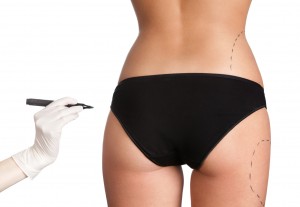 If you’re plagued with unsightly cellulite, you may be considering liposuction as a method of battling the bumpy, dimply nuisance and smoothing out your skin. While many problem spots on the body can be appropriate liposuction target areas, cellulite is, unfortunately, not one of them.
If you’re plagued with unsightly cellulite, you may be considering liposuction as a method of battling the bumpy, dimply nuisance and smoothing out your skin. While many problem spots on the body can be appropriate liposuction target areas, cellulite is, unfortunately, not one of them.
How Cellulite Differs from Fat
Although it appears to simply be deposits of fat under the skin, cellulite is actually a different animal altogether. The “cottage cheese” appearance is caused by irregularities in the mesh-like connective tissue that lies just below the skin’s surface, pressing down into the fatty tissue below. As the framework of the tissue develops weak points or openings, the layer of adipose fat that resides underneath pokes through, causing a lumpy appearance on the skin’s surface.
Why Lipo Won’t Help
Liposuction is highly effective in targeting localized fat deposits in the deeper layers of the skin, beyond where cellulite forms. Additionally, the ability to reach the fat cells with a liposuction cannula is significantly hampered by the fibrous connective tissue. Attempting to treat cellulite with liposuction rarely delivers an aesthetically pleasing result and may make its uneven appearance on the skin’s surface worse.
How to Combat Cellulite
So, can this formidable foe be prevented or treated at all? Although genetics do play a role in a person’s likelihood of developing cellulite, many cosmetic surgeons agree that lifestyle changes may help limit cellulite to some extent—for example, by staying healthy, losing excess weight and increasing muscle mass. Hopefully, future treatments will become available that are clinically proven to help improve the appearance of cellulite consistently and effectively.










